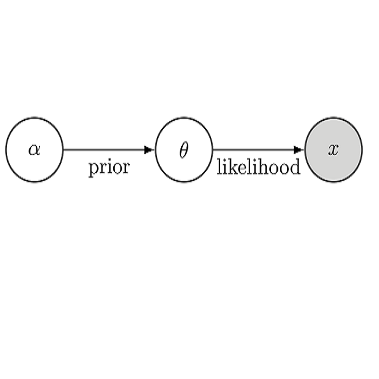The Earth's climate is rapidly changing and some of the most drastic changes can be seen in the Arctic, where sea ice extent has diminished considerably in recent years. As the Arctic climate continues to change, gathering in situ sea ice measurements is increasingly important for understanding the complex evolution of the Arctic ice pack. To date, observations of ice stresses in the Arctic have been spatially and temporally sparse. We propose a measurement framework that would instrument existing sea ice buoys with strain gauges. This measurement framework uses a Bayesian inference approach to infer ice loads acting on the buoy from a set of strain gauge measurements. To test our framework, strain measurements were collected from an experiment where a buoy was frozen into ice that was subsequently compressed to simulate convergent sea ice conditions. A linear elastic finite element model was used to describe the response of the deformable buoy to mechanical loading, allowing us to link the observed strain on the buoy interior to the applied load on the buoy exterior. The approach presented in this paper presents an instrumentation framework that could use existing buoy platforms as in situ sensors of internal stresses in the ice pack.
翻译:地球的气候正在迅速变化,一些最剧烈的变化可见于北极,那里的海冰量度近年来已大大缩小。随着北极气候继续变化,收集现场海洋冰量测量对于了解北极冰群复杂的演变过程越来越重要。迄今为止,北极冰压的观测在空间和时间上都很少。我们提出了一个测量框架,用压力计测量现有海冰浮标。这个测量框架采用贝耶斯推论法,从一组压力计测量测量测量中推断浮标上冰负荷的作用。为了测试我们的框架,从一个实验中采集了压力测量,浮标被冻结在冰层中,随后被压缩到模拟汇合的海洋冰层状况。使用线性弹性元素模型来描述变形浮标与机械装载的反应,使我们能够将浮标内观察到的压力与浮标外表面应用负荷联系起来。本文提出的方法提出了一个仪器框架,可用现有的浮标平台作为冰盒内应力的现场传感器。





